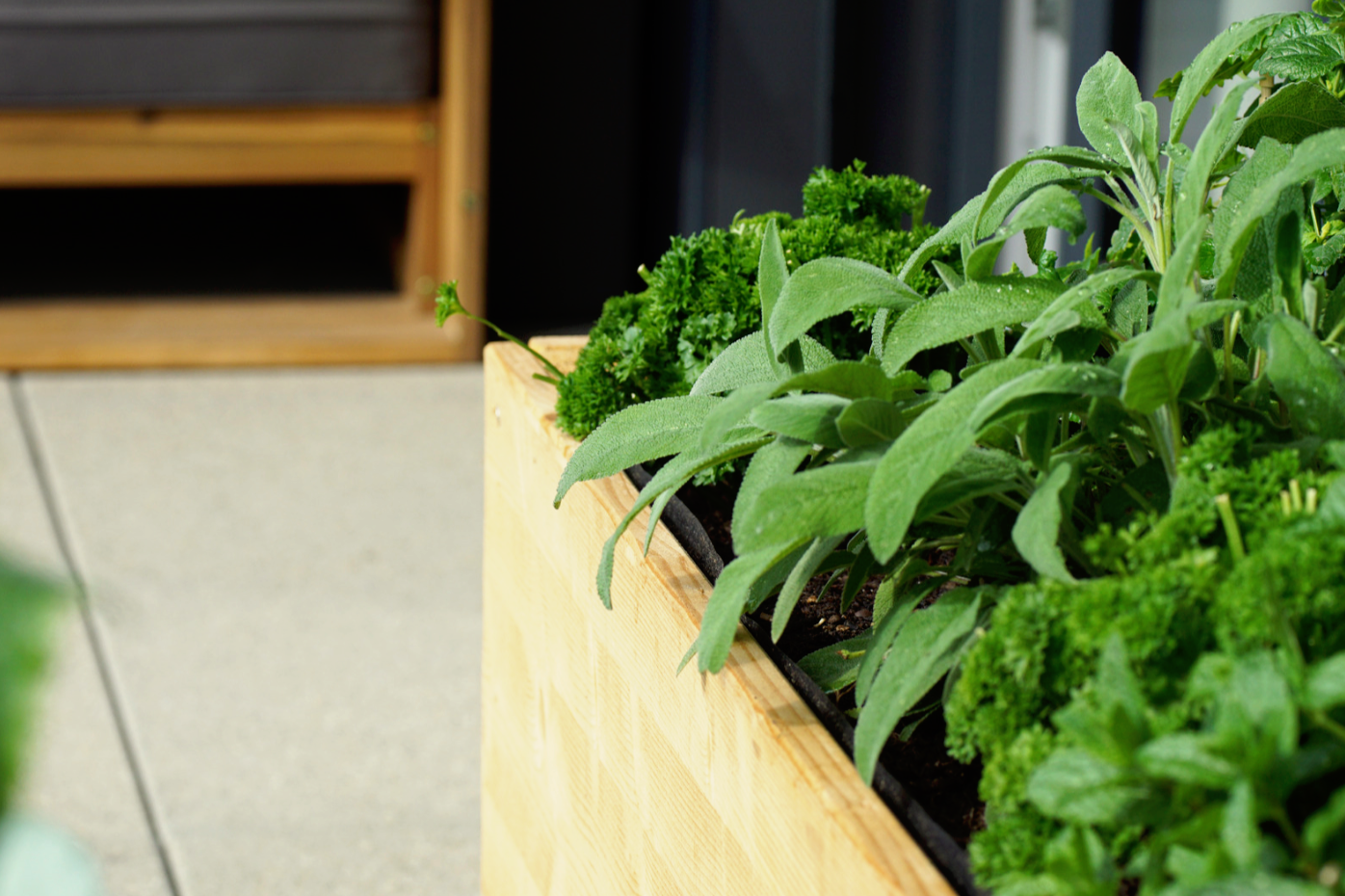A Mediterranean Container Kitchen Garden in 4 Steps
1. Choose Mediterranean Herbs
There’s something timeless about stepping outside and clipping a few fresh herbs for dinner. The scent alone feels like summer on the coast — even if your “coastline” is a sunny patio or back porch. A container kitchen garden is the perfect way to keep those flavors within reach, especially when space or soil is limited.
With the right mix of Mediterranean classics — Greek oregano, rosemary, sage and thyme — plus a few tender favorites like basil, mint and flat-leaf parsley, you can have a little slice of the Mediterranean growing right outside your kitchen door.
2. Soil, Sun & the Mediterranean Secret
The herbs that love sun-baked hillsides — rosemary, oregano, sage and thyme — prefer light, well-drained soil that’s not overly rich. A mix of quality potting soil and coarse sand or perlite mimics their native Mediterranean conditions.
For the more moisture-loving herbs — basil, mint and parsley — use soil that holds water a little better and keep it evenly damp. Grouping herbs with similar needs helps them thrive — keep the sun-lovers together and the moisture-seekers nearby but separate.
All herbs will need at least 6 hours of sunlight a day, although parsley and mint appreciate a little afternoon shade — especially in hot climates. If you can, position your containers where they’ll get morning sun and gentle light in the late day — bright enough for growth but not scorching.
3. Managing the Overachievers
Mint is wonderfully fragrant, fast-growing and . . . slightly mischievous. It spreads quickly and will happily overtake your entire garden if given the chance. Keep it in its own pot to prevent it from crowding out your other herbs.
Parsley and basil can share space with one another — they both enjoy evenly moist soil and partial shade — but don’t plant them too close to woody herbs like rosemary and sage, which prefer things a little drier.
4. Caring & Harvesting
Most herbs appreciate consistency over attention. Water deeply but infrequently, allowing the top inch of soil to dry before watering again. Snip herbs often to encourage fresh growth — harvesting actually keeps them healthy. For woody herbs like rosemary, sage and thyme, trim the tips regularly to keep them bushy. Basil should be pinched above the leaf nodes (right where two new leaves emerge) to prevent it from flowering too soon, while parsley benefits from cutting stems at the base rather than plucking individual leaves.
During the growing season, feed lightly every 4–6 weeks with a diluted organic fertilizer or compost tea. Remember, herbs produce more flavor when they’re slightly stressed, so resist the urge to overfeed — you want intensity, not pretty, green blandness.
A container kitchen garden is more than just convenient — it’s sensory therapy. The scent of rosemary after watering, the softness of mint between your fingers, the earthy perfume of parsley in the early morning — all of it connects you to the rhythm of real food and fresh flavor.
Whether you have a balcony or a backyard, these herbs offer a daily dose of wellness and a touch of Mediterranean warmth, one harvest at a time.





